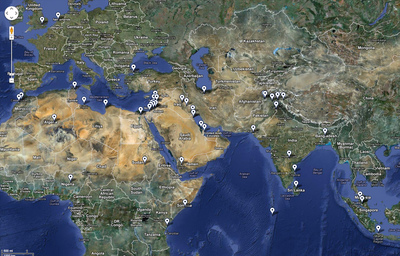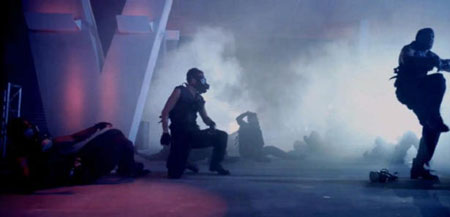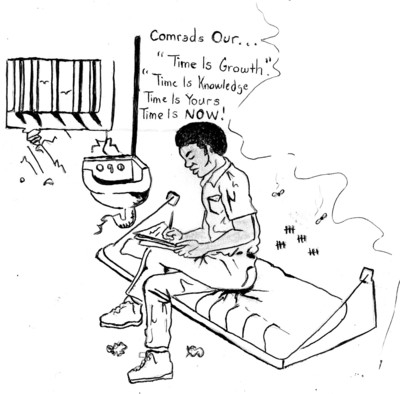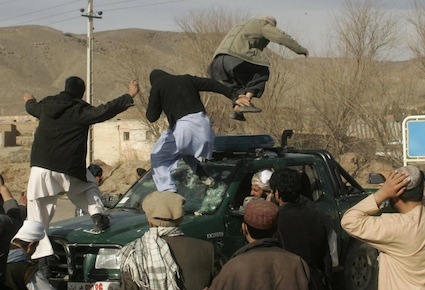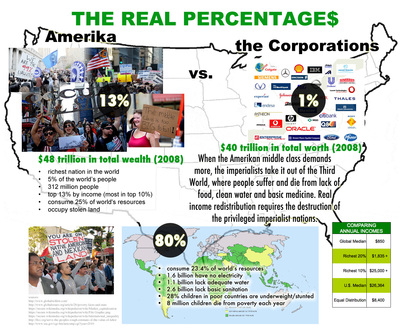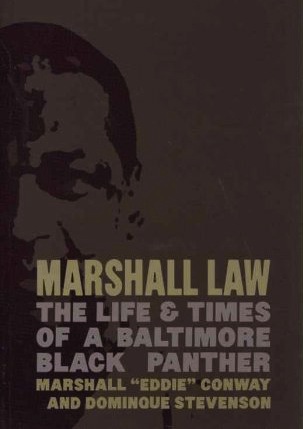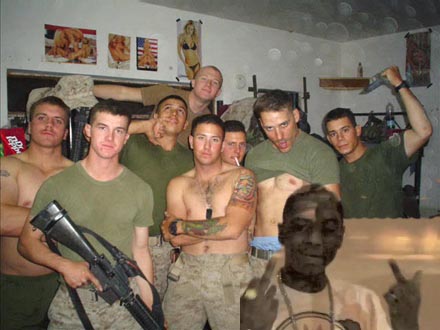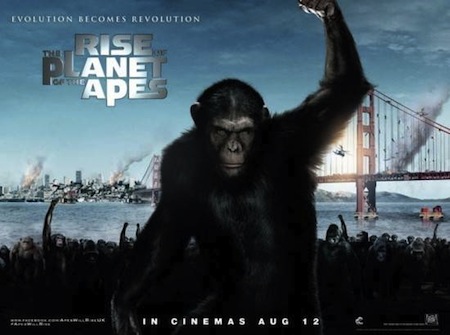
New Must-Read on the Labor Aristocracy
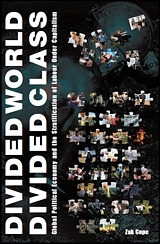
Divided World Divided Class: Global Political Economy and the Stratification of Labour Under Capitalism
by Zak Cope
Kersplebedeb, 2012kersplebedeb
CP 63560, CCCP Van Horne
Montreal, Quebec
Canada
H3W 3H8
It is with great pleasure that we announce a new release that MIM(Prisons) is adding to the labor aristocracy section of our must-read list. Divided World Divided Class by Zak Cope contributes up-to-date economic analysis and new historical analysis to the MIM line on the labor aristocracy. I actually flipped through the bibliography before reading the book and was instantly intrigued at the works cited, which included all of the classic sources that MIM has discussed in the past as well as newer material MIM(Prisons) has been reviewing for our own work.
The Labor Aristocracy Canon
Before addressing this new book, let me first put it in the context of our existing must-read materials on the labor aristocracy, which has long been the issue that the Maoist Internationalist Movement differentiated itself on. MIM(Prisons) recently assembled an introductory study pack on this topic, featuring material from MIM Theory 1: A White Proletariat? (1992) and Monkey Smashes Heaven #1 (2011). We still recommend this pack as the starting point for most prisoners, as it is both cheaper to acquire and easier to understand than Cope’s book and other material on the list.
Settlers: The Mythology of the White Proletariat by J. Sakai is a classic book documenting the history of Amerika as an oppressor nation whose class nature has always been bourgeois. It is for those interested in Amerikan history in more detail, and particularly the history of the national contradiction in the United $tates. While acknowledging Sakai’s thesis, Cope actually expands the analysis to a global scale, which leads to a greater focus on Britain in much of the book as the leading imperialist power, later surpassed by Amerika. This complete picture is developed by Cope in a theory-rich analysis, weaving many sources together to present his thesis. HW Edwards’s Labor Aristocracy: Mass Base of Social Democracy is a less cohesive attempt at a similar approach that is almost half a century old. Edwards is wishy-washy on the role of First World “workers,” where Cope is not. Edwards provides a number of good statistics and examples of his thesis, but it is presented in a more haphazard way. That said, Labor Aristocracy is still on our must-read list and we distribute it with a study guide.
MIM went back to the labor aristocracy question in MIM Theory 10: The Labor Aristocracy. This issue built on MT 1 some, but primarily focuses on an in-depth look at the global class analysis under imperialism by the COMINTERN. The importance of this issue during WWII is often overlooked, and this essay gets deep into the two-line struggle within the communist movement at the time. We have a study pack on this piece as well.
The last work that we include in the canon is Imperialism and its Class Structure in 1997(ICS) by MC5 of the Maoist Internationalist Movement. This book is most similar to Cope’s work, with Cope seeming to borrow specific ideas and sources without ever acknowledging MC5’s work. Since Cope is very generous in acknowledging ideas he got from others, one suspects that there is a political motivation behind ignoring the number one proponent of the position he is trying to defend in his book. We think MC5 would see Cope’s work as a compliment and a step forward for the scientific analysis, particularly since Cope does not bring in anything to oppose the MIM line or to confuse the issue. Cope’s book is very well researched and put together as an original work, and we have no interest in defending intellectual property.
The major new contribution in Cope’s book is the historical analysis of the labor aristocracy in the context of the global system of imperialism. He also does some original calculations to measure superexploitation. His analysis of class, nation and modern events is all found in contemporary Maoism. Cope seems to be walking a line of upholding MIM Thought, while not dirtying his reputation with the MIM name. This is seen in his discussion of nationalism, which is often a dividing line between MIM Thought and the social democrats of academia. Cope gives a very agreeable definition of nation, and even more importantly, an analysis of its role and importance in the imperialist system related to class divisions. Yet, he fails to cite Stalin in doing so, while Maoists are honest about Stalin’s contributions on the national question. So what we have is an excellent book on the labor aristocracy that avoids other issues that are difficult for the left-wing white nationalists to handle. In a way, this sanitized version of what is already a very bitter pill for readers in the First World may be useful to make this theory more available in an academic context. But no serious communist can just ignore important questions around Stalin and even the smaller, yet groundbreaking work of MIM itself.
MC5 or Cope?
For the rest of this review I will discuss Divided World in relation to Imperialism and its Class Structure (ICS) as they are parallel works. The above-mentioned sanitizing is evident in the two books’ different approaches and definitions. Both attempt to present the basics, before getting into some intense analysis later on. Yet Cope sticks to discussing mostly Marx, with a healthy dose of Lenin’s theory of imperialism without too much mention of the Soviet Union, while MC5 cites the practice of Stalin and Mao as leaders of socialist countries, as well as the contemporary pseudo-Maoists. It is a connection to communist practice that makes ICS the better book politically.
Cope’s work, by default, has the benefit of having more recent statistics to use in part II for his economic analysis, though his approach is very different from MC5’s anyway. Part III, which focuses on debunking the myths promoted by the pseudo-Marxist apologists for high wages in the First World, also has fresh statistics to use. MC5 addresses many ideological opponents throughout h book, but Cope’s approach leaves us with a more concise reference in the way it lists the main myths promoted by our opponents and then knocks them down with basic facts.
MC5 spends more time addressing the ideas of specific authors who oppose the MIM thesis, while Cope tends to stick to the general arguments except when addressing authors such as Emmanuel who is an early trail-blazer of MIM Thought, but said some things that Cope correctly criticizes. Overall this provides for a more readable book, as the reader can get lost trying to figure out what position MC5 is arguing against when s/he refers to authors the reader has not read.
The model of imperialism that you get from each book is basically the same. Both address unequal exchange and capital export as mechanisms for transferring wealth to the First World. Both stress the structural basis of these mechanisms in militarized borders, death squads, monopoly and much higher concentrations of capital in the First World due to primitive accumulation and reinforced by the mechanisms of continued superexploitation.
While both authors take us through a series of numbers and calculations to estimate the transfer of value in imperialism, MC5 does so in a way that makes the class structure arguments more clearly. By focusing on the proportions, MC5 leaves the revisionists looking silly trying to explain how greater production per wage dollar in the Third World coexists with supposedly lower rates of exploitation in the Third World. Or how the larger unproductive sector in the First World can make similar wages to the productive sector, while the productive sector in the First World allegedly produces all the value to pay both sectors, and profit rates and capital concentration between sectors remain equal. Or if they acknowledge a great transfer of wealth from the Third World to the First World, and it is not going to 99% of the population as they claim, why is it not showing up in capital accumulation in those countries? As MC5 points out, remembering these structural questions is more important than the numbers.
Cope takes a numbers approach that ends with a transfer of $6.5 trillion from the non-OECD countries to the OECD in 2009 when OECD profits were $6.8 trillion. This leaves a small margin of theoretical exploitation of the First World. He points out that using these numbers gives $500 of profits per year per OECD worker compared to $18,571 per non-OECD worker. So even that is pretty damning. But he goes on to explain why the idea that OECD workers are exploited at all is pretty ridiculous by talking about the percentage of unproductive labor in the First World, an idea that MC5 stresses. Both authors make assumptions in their calculations that are very generous to the First Worldist line, yet come up with numbers showing huge transfers of wealth from the Third World to the First World “workers.” Cope even uses OECD membership as the dividing line, leading him to include countries like Mexico on the exploiter side of the calculation. MC5, while a little less orthodox in h calculations, came up with $6.8 trillion in superprofits going to the non-capitalist class in the First World in 1993 (compared to Cope’s $0.3 trillion in surplus being exploited from them in 2009). As both authors point out, they make the best of data that is not designed to answer these kinds of questions as they try to tease out hidden transfers of value.
Implications to our Practice
If Cope’s book helps bring acceptance to the reality of the labor aristocracy in economic terms, there is still a major battle over what it all means for revolutionaries. In MIM’s decades of struggle with the revisionists on this question we have already seen parties move away from a flat out rejection of the labor aristocracy thesis. Cope’s conclusions on the labor aristocracy and fascism are well within the lines of MIM Thought. But already Cope’s conclusions have been criticized:
As mentioned in an earlier post, this kind of “third worldism” represents the very chauvinism it claims to reject. To accept that there is no point in making revolution at the centres of capitalism, and thus to wait for the peripheries to make revolution for all of us, is to abdicate revolutionary responsibility–it is to demand that people living in the most exploited social contexts (as Cope’s theory proves) should do the revolutionary work for the rest of us. (2)
Some see MIM Thought as ultra-leftist, and just plain old depressing for its lack of populism. Practitioners of revolutionary science do not get depressed when reality does not correspond to their wishes, but are inspired by the power of the scientific method to understand and shape phenomenon. But there is truth in this critique of Cope’s book due to its disconnection from practice. A seemingly intentional approach to appeal to academia has the result of tending towards defeatism.
When it comes to practice in the United $tates, the question of the internal semi-colonies has always been primary for the revolutionary struggle. Yet today, there is a much greater level of integration. Cope’s conclusions have some interesting implications for this question. On the one hand there is no anti-imperialist class struggle here “since economic betterment for people in the rich countries is today intrinsically dependent on imperialism”. (Cope, p. 304) Yet assimilation is still prevented by the need for white supremacism to rally Amerikans around defending imperialist oppression of other peoples. Since national oppression will always translate into some relative economic disadvantage, we may be witnessing the closest real world example of national oppression that is independent of class. And Cope argues that this will continue within U.$. borders because you can’t educate racism away, you must destroy the social relations that create it. (Cope, p. 6)
While Cope is explicitly non-partisan, MC5 provides a bit more guidance in terms of what this all means for imposing a dictatorship of the proletariat in a majority exploiter country, and how class struggle will be affected after that dictatorship is imposed. MIM also gives the explicit instruction that we do not support inter-imperialist rivalry or protectionism. This becomes a bigger challenge to promote and enforce among our allies in the united front against imperialism. Certainly, promoting these books and other literature on the topic is one part of that battle, but we will need other approaches to reach the masses who are taken in by the social democrats who dominate our political arena as well as their own potential material interests.
As long as would-be anti-imperialists in the First World ignore the labor aristocracy question, they will keep banging their heads against brick walls. It is only by accepting and studying it that we can begin to make breakthroughs, and this is even true, though less immediately so, in the Third World as Cope acknowledges (Cope, p. 214). Despite works dating back over a hundred years discussing this theory of class under imperialism, we are in the early stages of applying it to the polarized conditions of advanced imperialism with the environmental crisis and other contradictions that it brings with it.








